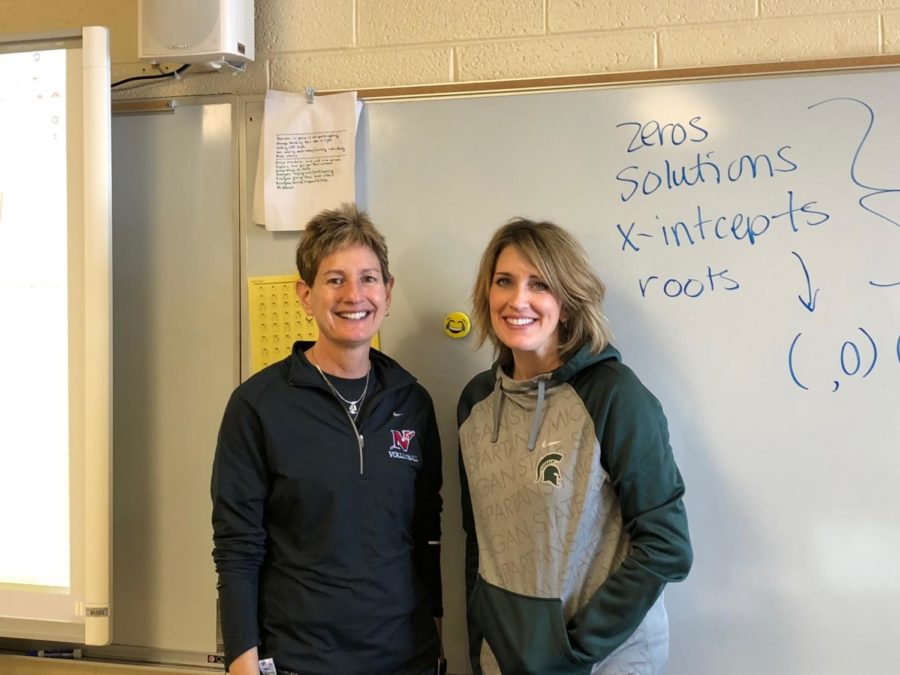Math Teachers Talk about Dual-Teaching Style
Since the 2012-’13 school year, Hermans (left) and Gasparick (right) have seen improvement with their dual-teaching style.
March 3, 2019
We have all been there — sitting in class with hand raised waiting for a teacher to come and help.
Unfortunately, that teacher is preoccupied with another student. Only if there is more than one teacher in that class to assist. In the case of Ms. Wendy Hermans and Mrs. Elissa Garsparick, this scenario is avoided.
Hermans and Gasparick have been teaching partners in the Algebra 1 classes for the past seven years of their teaching careers and by the looks of it won’t be stopping anytime soon.
“We have fun almost everyday,” Gasparick says. “And it is even better when you get to know your co-teacher well and also kind of scary when you think the same way or complete each other’s sentences.”
The real question, however, is: “Should more classrooms at NHS adapt to this type of teaching style with two teachers in a class?”
Gaspatrick shares her wish that more classrooms could have two or more teachers teaching together. She finds it it beneficial for everyone. She acknowledges that staffing needs and the amount of classes present challenges.
“I know that if we could as a school, we would have more classes be co-taught.”
Since the 2012-’13 school year, Hermans and Gasparick have seen improvement with their dual-teaching style.
Teachers can interact with their students more and have second opinions with their ideas that they have for lessons and curriculum.
Students benefit from more chances to ask for help and get to see instruction in a variety of methods based on each teacher’s personality and teaching style.
With the teachers of room 431’s friendly, supportive and resourceful personalities, there does not seem to be any problem with students getting the answers for any math- related questions they might need at NHS.



Will Clark • Mar 5, 2019 at 10:48 PM
I thought that this piece was very interesting. As I have not participated in a dual-teaching classroom, I found it very informative to learn about the manners through which teachers and students can benefit through this style.